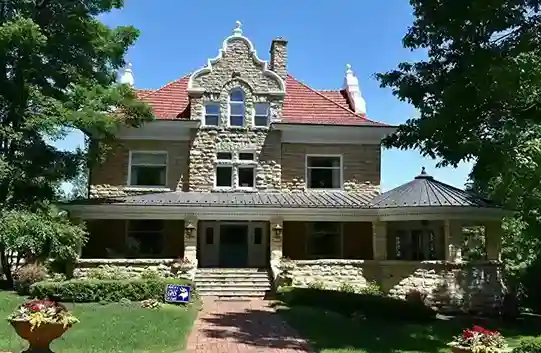Everything to Know About Mission Revival Architecture
Mission Revival Architecture evokes the spirit of early California and the Mediterranean region, drawing inspiration from the Spanish missions established along the coast between 1769 and 1823. This architectural style is still known for its romanticism and continues to influence design today. With its signature features and emphasis on simplicity, it has become a beloved style in Southern California and beyond.
What is Mission Revival Architecture?
Mission Revival Architecture blends traditional Spanish Colonial Revival with the needs of the modern era. Rooted in the aesthetics of California’s historic Spanish missions, this architectural style showcases elements that bring together rustic charm, beauty, and functionality.
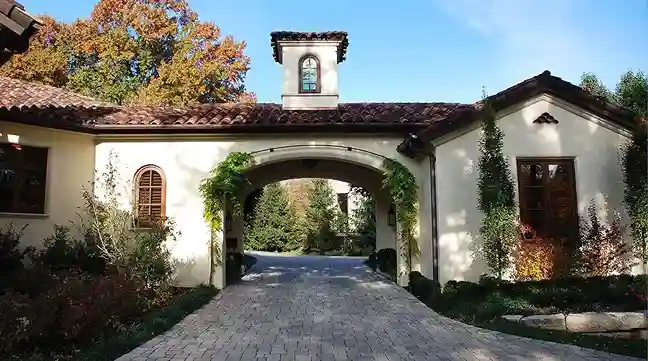
Key Features of Mission Revival Style Architecture
Mission Revival Architecture often includes influences from Mediterranean countries and Moorish and Spanish colonial traditions, contributing to its timeless appeal. Inside a Mission Revival building, you’ll typically find simple, rustic interiors that emphasize natural materials and minimal ornamentation. The design is often balanced, marking the architectural style with symmetry and simplicity.
Let’s find out some of the more important characteristics of the Spanish Mission Revival architecture.
1. Smooth Stucco Walls
A hallmark of Spanish Mission Revival Architecture is smooth stucco walls. These walls often have an earthy, neutral palette of beige, ochre, and terracotta, which is perfect for the arid climate. The smooth, often textured stucco surface gives the building a clean yet organic look. Another defining characteristic of this architectural style is the use of arcades and arched openings. These arches create passages between spaces, often seen in verandas, walkways, and open courtyards. The arches themselves are typically made from brick or stucco.
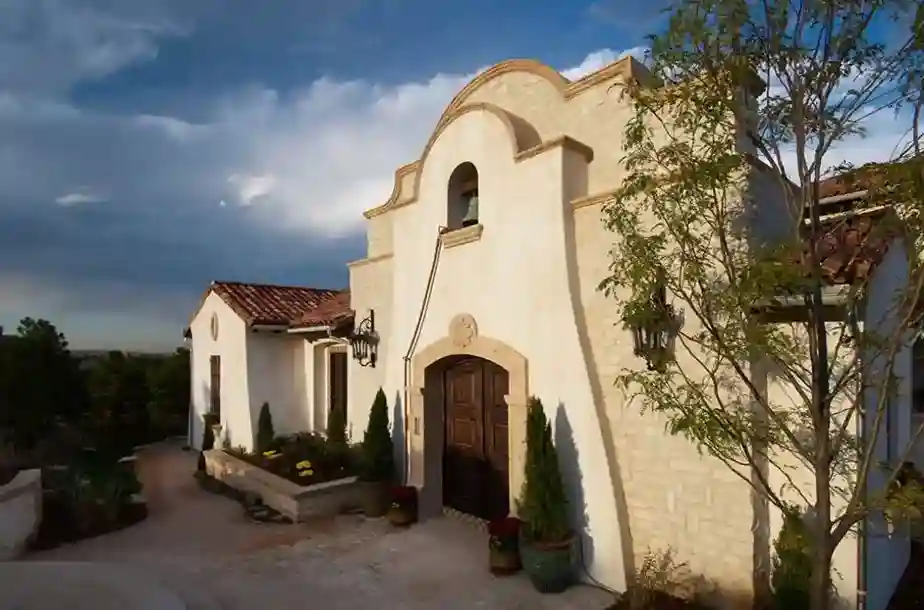
2. Red Clay Tile Roofs
Another feature of Mission Revival architecture is red clay tile roofs. These clay tiles are typically barrel-shaped, which allows rainwater to flow off easily. It recalls the roofs of the original Spanish missions and the Mediterranean architecture. Mission Revival buildings also include overhanging eaves that protect from the sun and rain. These eaves offer shade and coolness to the building’s interior. You cannot miss the curved parapets and rooflines; adding to the fluidity of the building. These curved shapes add softness to the silhouette of the structure and are often seen above windows or doorways.

3. Doors and Windows
In Mission Revival buildings, large, simple wooden doors are a focal point. These oak and local wooden doors are simple with sturdy construction and a rustic finish. They often remain unembellished. These houses feature deeply set windows to create privacy. Framed with stucco, they are laced with small decorative details or wrought iron and wooden details. Wrought iron is commonly used for gates, railings, and balconies, while wood is often featured in window shutters, doors, and decorative elements.
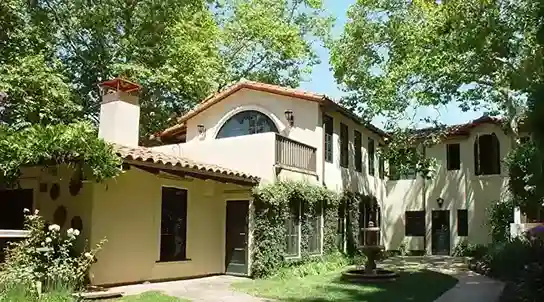
4. Bell Towers and Campanarios
Inspired by the original Spanish missions, bell towers (or campanarios) are a prominent feature of Mission Revival Architecture. These towers; a focal point, hold brass bells.
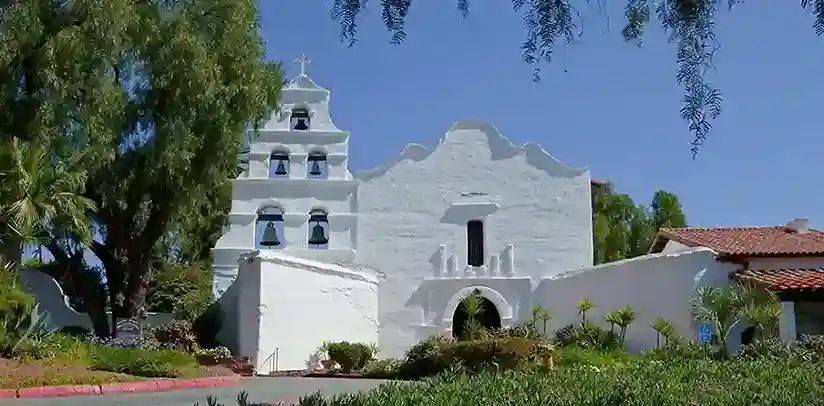
5. Minimal Ornamentation: Terracotta or Decorative Tile Accents
Details like terracotta or decorative tile accents are frequently used in Mission Revival buildings. These tiles may adorn stair risers, or fireplaces, often made in rich, earthy colors with complex patterns. True to its Spanish Colonial roots, Mission Revival Architecture favours minimal ornamentation. This lack of excessive decorative elements allows the natural beauty of the materials and the architecture to shine through.

6. Courtyards and Gardens
Many Mission Revival homes feature courtyards and gardens as integral parts of their design. Lush landscaping, fountains, and terracotta planters are often found in these courtyards, reinforcing the Spanish mission’s connection to outdoor living.
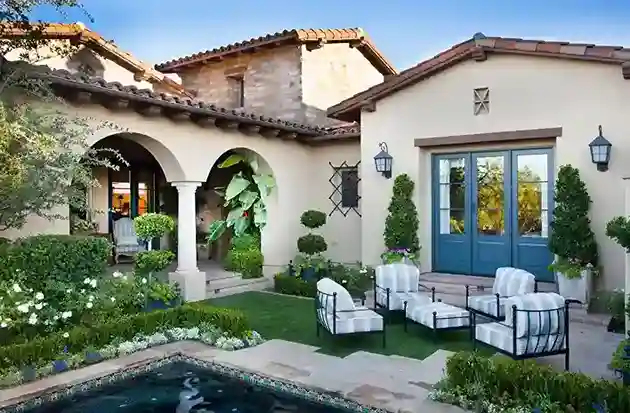
Image Courtesy – ThoughtCo
Contributor

